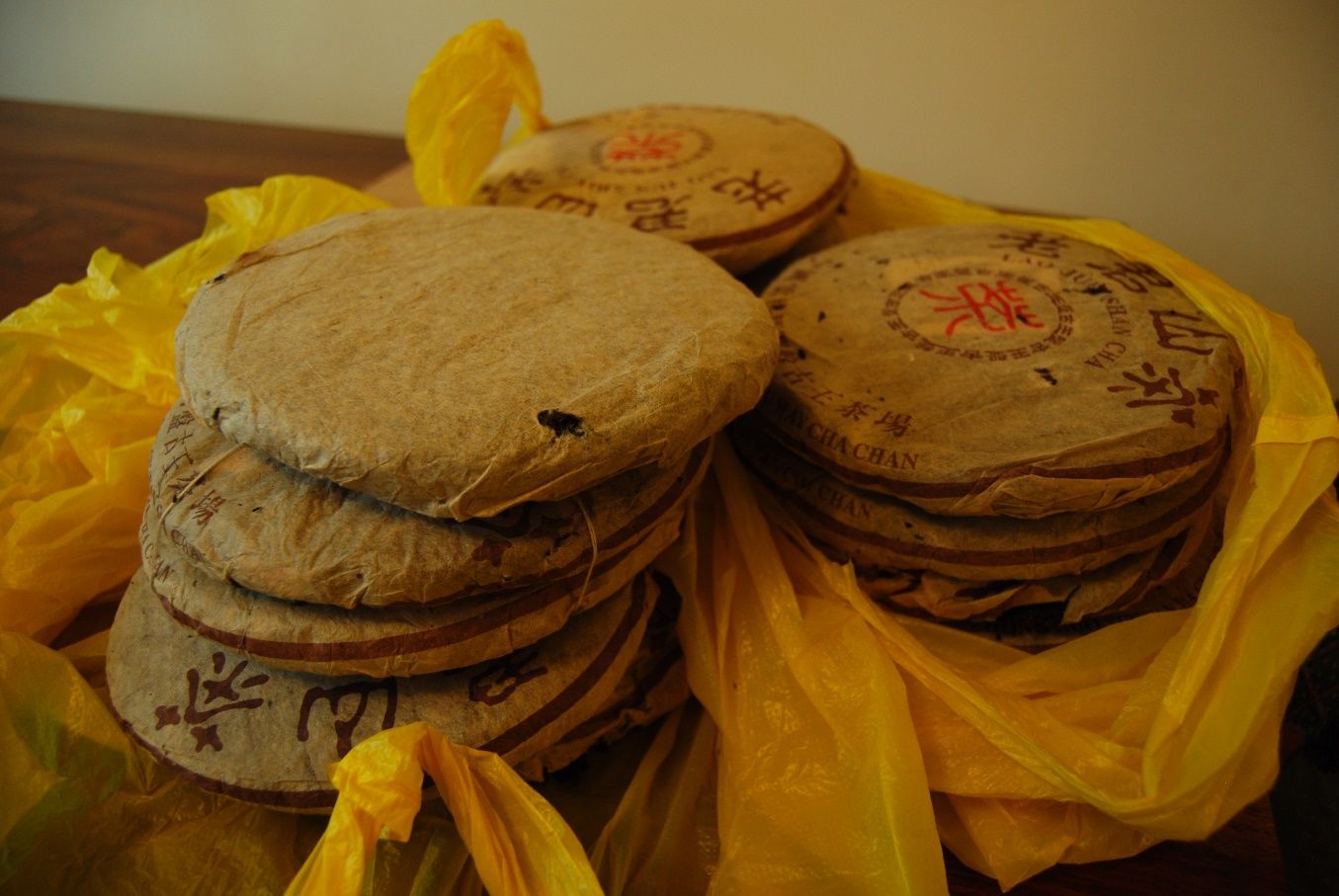I have been sampling my own shelves widely, of late, and have come to some conclusions on the relative merits of my cakes ability to age. (In each case, I have added notes to the original articles, which you are invited to inspect by following the corresponding links.)
The Good
The 7542-801 is quite good, although a little akin to a "dry storage" cake. The 7532-801 is better - it tastes more humid and more developed, and does not have the "dry storage" straw of the 7542-801. Oddly, the 7542-901 is absolutely first-class. Made just one year later, it is dark and heavy in that classical Dayi manner, and tastes very nicely aged indeed. I suspect that most people would enjoy it - they would certainly enjoy it for the sub-$10 price in 2009.
Another success story is our aging experiment in central China, where Chinese Mama and Baba have recently brought us a few tong from our stores there. The 1997 Laojunshan (pictured below), being one such cake brought to England, even though it is shupu, is heavy, round, and excessively sweet with old vanilla. I look forward to trying the shengpu that we have.
My post-viva Hongjie cakes, bought in 2009 in Maliandao, when my dear wife was unknowingly carrying Xiaohu, our eldest son, has come on very well (much like dear Xiaohu himself!). The change in the tea-leaves from their original green to a husky red-orange is very encouraging.
Finally, the 1996 Xiaguan bricks from Maliandao (pictured below) are coming on a treat - somehow, they are superdense carriers of vanilla and smooth huigan.
The Not-So-Good
Oddly, the 2003 Zitenglu Zipinhao [Wysteria Teahouse purple-label], pictured below, fits in this category. The original sample that I tried, stored in Singapore, stopped the clocks and was unfathomably excellent. The actual cake, stored in Taiwan, was less amazing. I managed to overcome some of this simply by using many more leaves of the Taiwanese-stored cake, which got it a little closer to the Singaporean version.
Perhaps most concerning of all, the 2011 Yunzhiyuan "Autumnal Xikong" (pictured below) has collapsed into tasting like purple tea. I am deeply concerned for its future, and will take this as a warning concerning the purchase of super-sweet, unaged autumnal cakes in future.
Tea is such an education, and an experiment in itself.





Hi Hobbes, how are you? I wish you and your familly a happy new year!
ReplyDeleteI write to you this time in relation to one of my new year´s purposes: To learn more about pu erh tea!! Specially the sheng or raw varieties. Because after a few years, going back and forward in the pu er theas, I´m still feeling that I am only "splashing" in this fascinating world.
By now I tasted several raw Lin Cang´s and others, of 2006, 2009, 2012.From french teashops mostly: Terre de Chine and Les Trois Thés. I´ll put you the links of some examples below.
Now I want to buy some cakes, and I was looking and looking, very different prices, different teashops, and I don´t really know where to begin.
I don´t pretend that you give me some purchase list, but If you could tell me some general advices I would really appreciate it.
Thank you in advance
Felix
PS:Examples: http://www.terredechine.com/en/e-boutique/product/342/pu-erh-sheng-cha/5683/pu-erh-march-2006
http://www.terredechine.com/en/e-boutique/product/342/pu-erh-sheng-cha/5686/pu-erh-march-2009
Dear Felix,
ReplyDeleteThanks for the comment - you have a very attractive web-site.
As far as general advice goes, always (always) try before you buy and let your taste-buds (and wallet) decide. :)
Toodlepip,
Hobbes